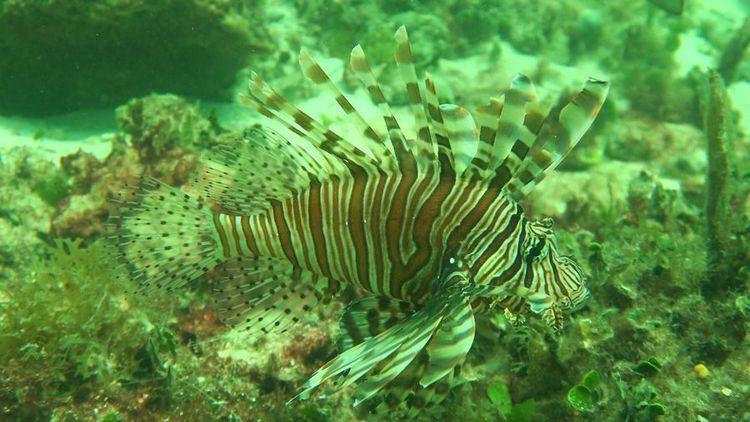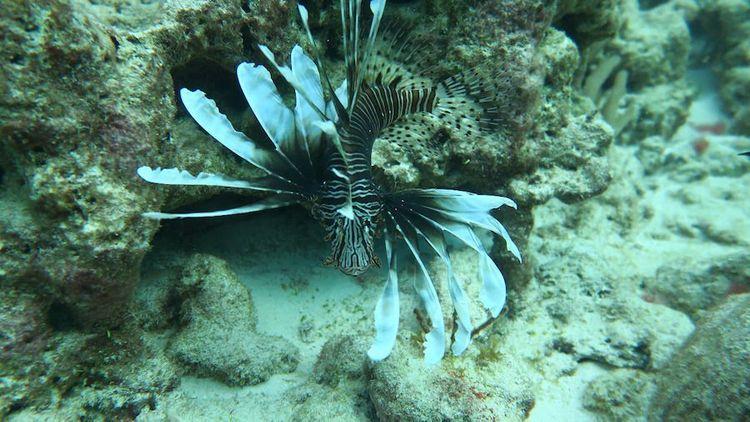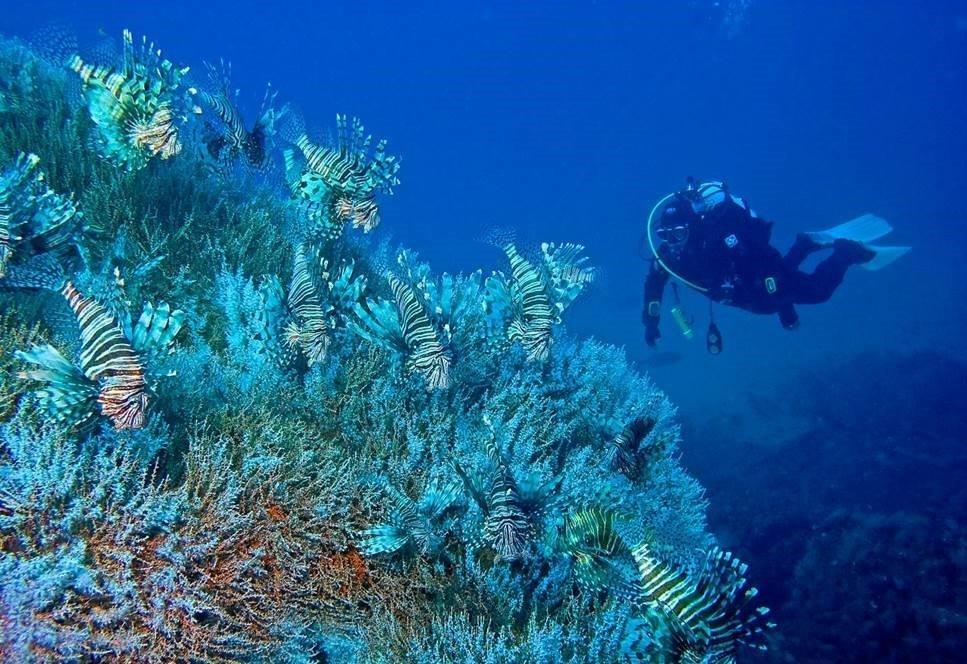It is a majestic, white-furrowed fish with red and brown lines; elegant pectoral fins and 18 dorsal fins in the shape of spines, which carry poison at the tip. This is the lionfish (pterois antennata), the most lethal invasive species for the marine ecosystems of the Greater Caribbean.
Its natural habitat is the reef lagoons of the Indo-Pacific, between the coasts of Africa and Asia, but for two decades its population has been growing exorbitantly in the waters of the Greater Caribbean.
Its origin in the Caribbean Sea is attributed to the release of specimens from the Florida aquarium in the 1990s, said María del Carmen García Rivas, director of the Puerto Morelos Reef National Park.
Without predators, this fish has a very high reproductive capacity compared to other species. Each female can lay eggs for 5,000 eggs in an incubation period of 45 days, about three times a year.
“Since it has no competition in the natural environment, it has several advantages compared to native species, allowing it to colonize quickly,” said the official, whose doctoral thesis was based on strategies for the control of this fish.

Photo: Jorge Peniche/CICY
In 2003, it was first identified off the coast of Quintana Roo. Currently, its presence has been reported in practically the entire Caribbean region, from the Bahamas to Colombia and Venezuela.
In the Caribbean, fish have found conditions equal to or better than those in their natural range, explained Adán Caballero Vázquez, a researcher at the Laboratory of Ecology and Biodiversity of Aquatic Organisms (Leboa), of the Yucatan Scientific Research Center (CICY).
It eats practically everything that moves, that's where the problem lies. Crustaceans, fish and mollusks are all part of their diet, according to research led by Caballero Vázquez.
The Leboa team set out to obtain data on the distribution, behavior and biology of these fish, to understand the success of their invasion and possible effects.
For this purpose, measurements were taken, weighed and the stomach contents of specimens were reviewed, to determine what they eat.
The results showed that in the Caribbean fish sizes are larger than even in the Indo-Pacific.
According to Adán Caballero, adult specimens have a diet based on fish, then mollusks and finally crustaceans. In contrast, lionfish juveniles consume more crustaceans.
It was also found that they are species that adapt easily to waters with different salinity conditions, since there are some that are distributed in the “water eyes” in the Puerto Morelos area, which are flows of fresh water from the subsoil. In these “water eyes” it is also common for there to be a higher concentration of nutrients and a decrease in oxygen in the water.
Imbalance, how does it affect?
They are carnivorous fish. Everything in its path can be food for your voracious stomach, which can expand up to 30 times its size. They are even cannibals, as they can eat their own young.
In ecosystems, balance is key. With no predators, lionfish are wiping out native species.
“There is a significant reduction in fish, crustaceans, mollusks and several aquatic organisms due to lionfish predation, and because it is having an important effect not only on species of ecological importance, but also on species of commercial importance,” said Adán Caballero.

Photo: Jorge Peniche/CICY
Crabs, shrimp, juvenile groupers, snappers, parrotfish, octopuses and lobsters are part of their diet.
“It's a cascading effect, not only is it eating another species, but breaking the balance triggers a series of negative impacts,” he said.
The decline in commercial fish and crustaceans directly affects communities that rely on these marine resources for their livelihoods.
On the other hand, in the ecological environment, it generates several problems. Melina Soto, representative in Mexico of the Healthy Reefs Initiative, said that the Mesoamerican Reef is experiencing several challenges that combine.
Water pollution and global warming have caused a high proliferation of fleshy macroalgae, which grow on corals, suffocate and kill them.
To control the growth of these macroalgae, herbivores, such as king crab, different types of parrotfish or sea urchins, are key.
“If we are losing herbivorous allies, then the problem becomes more serious,” he said.
The growth of algae, with the decline of herbivorous marine species, has a direct impact on the health of reefs, relevant ecosystems that provide multiple environmental services to coastal populations.
Human, so far, the only predator
Controlling the lionfish is an arduous task. Eradicating it is utopian, it won't happen, said María del Carmen García Rivas.
“We have to get used to the fact that there will always be lionfish in our seas, what we can do is try to control it and wait for the environment to adapt and have predators,” he said.
Although it is already thought that it may begin to have some predators, such as barracudas or stingrays, it is still not enough to control the populations of the invasive species. There is not much data on this either, said Adán Caballero.
Faced with the situation, various strategies have been implemented in towns such as Xcalak, Mahahual, Cozumel and Puerto Morelos, in order to make commercial use of this species, whose meat is tasty and exotic.
Although fishing is prohibited in protected natural areas, in the Puerto Morelos Reef National Park, local fishing cooperatives can access to extract only this species.
They are not great swimmers, so catching them is relatively easy, said the director of the National Park. Fishing gear such as directed nets, hooks or harpoon is used.
“Of course, you have to be very careful, because it has poisonous thorns. It doesn't kill, but it hurts like you're going to die.” They belong to the fish family Scorpaenidae, to which the stonefish also belongs, considered the most lethal poisonous fish.
The commercial price of lionfish in seafood restaurants in the town of Puerto Morelos, in Quintana Roo, even exceeds the price of salmon, as it sells for up to 500 pesos per kilo.
But not only is their meat used, but women artisans are also using their fins to make crafts.
Both García Rivas and Melina Soto agreed that the strategy of obtaining commercial benefits has been functional in reducing impacts on marine ecosystems.
Information is missing
Adán Caballero considered that since the pandemic, academic studies on this exotic species have declined considerably due to lack of resources. In addition, he said, other more conspicuous problems such as sargassum have garnered attention.
However, he asserted that there is a lack of up-to-date information on the distribution of the fish, its colonization dynamics and to confirm if, in fact, it already has some predators.
He added that there are also underexplored areas, as these fish - which are distributed in shallow waters - are found at ever greater depths, and larger specimens.
“We don't know the impact it's having on deep waters,” he concluded.



Comentarios (0)